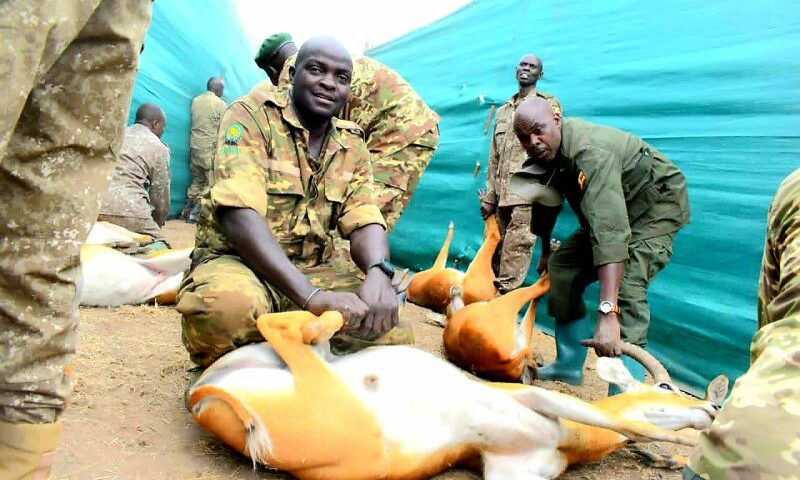By Spy Uganda
Uganda Wildlife Authority (UWA) has commenced the translocation of 200 Uganda Kobs from Murchison Falls Conservation Area to Kidepo Valley Conservation Area.

30 males and 170 females will be translocated from Kabwoya Wildlife Reserve in Murchison Falls Conservation Area and released into Kidepo Valley National Park.
This is the second translocation of Kobs to Kidepo Valley National Park in six years, following the translocation of 110 Kobs to the park.

In 2017 UWA conducted a similar operation in order to diversify wildlife species in Kidepo Valley National Park which was replicated in Katonga Wildlife Reserve, Lake Mburo National Park and Pian Upe Game Reserve to include the majestic giraffe species.

The Kob population in the park has since increased from 4 individuals in 2017 and is estimated between 350-400 following the 2017 translocation and successful natural breeding over the last five years.

This year’s translocation operation will see the Kob population in the park increase to six hundred individuals.
The Executive Director of Uganda Wildlife Authority (UWA) Sam Mwandha said that the translocation will see the Kob population increase and multiply faster in the park which will ensure their long-term survival.
“The current population of Kobs in Kidepo Valley National Park is not what we want, therefore we have to reinforce it by taking more Kobs there. Having Kobs in different parks will play a significant role in ensuring their long-term survival,” he said.
The translocation operation was flagged off by the UWA Director for Conservation John Makombo in Kabwoya Wildlife Reserve. He said that the translocation addresses one of UWA’s key strategic objectives of species, population restoration in places where they initially ranged to ensure their survival, especially in light of the current land use changes and other developments in their current ranges.
“This exercise is key in the fulfillment of UWA’s mandate of protecting and conserving Uganda’s wildlife resources, we are expanding the species range mindful of the land use changes in the country,” he said.
The translocation is aimed at re-enforcing the Kob population in Kidepo Valley National Park to enhance breeding, genetic diversity and ecosystem balance. It will also meet UWA’s strategic objective of restoring species in their former rangelands, enhancing biodiversity and ecosystem balance and utilization and improving tourism in the park.
So significant is the Uganda Kob to the country that, together with the grey crowned crane, it adorns Uganda‘s National Emblem, the ‘Coat of Arms’ representing the diversity of wildlife in its imposing presence on all government symbols including the national flag.
The Uganda Kob is similar in appearance to the impala but it is more sturdily built. Only males have horns, which are lyre-shaped, strongly ridged and divergent. Males are slightly larger than females, being 90 to 100 cm at the shoulder, with an average weight of 94 kg. while females are 82 to 92 cm at the shoulder and on average weigh about 63 kg. The white throat patch, muzzle, eye ring and inner ear and the golden to reddish-brown coat/skin color differentiate it from other Kob subspecies.
Kobs are typically found in open or wooded savannahs within a reasonable distance from water and in grasslands near rivers and lakes. About 98% of the present population is found in national parks and other protected areas.
Uganda Kobs are herbivores and feed largely on grasses and reeds. The females and young males form loose groups of varying size, which range according to food availability, often moving along watercourses and grazing in valley bottoms. They can travel 150 to 200 km in search of water during the dry season. Females become sexually mature in their second year while males do not start breeding until they are older. Calving takes place at the end of the rainy season; a single calf is born in the months of November or December, after a gestation period of about nine months.








